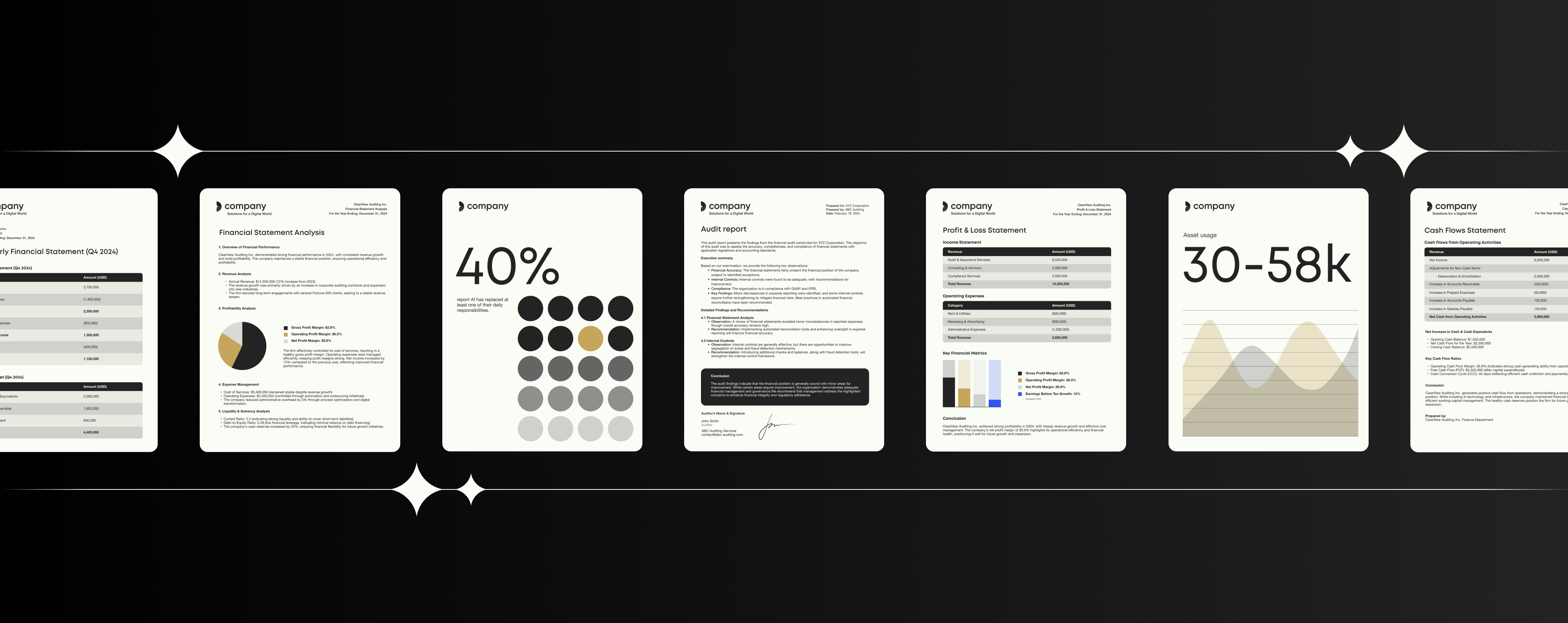The ROI of Connected Content Integrations

Discover how better-connected content drives brand consistency and greater marketing and sales efficiency, while reducing company risk.
“All I really need to know I learned in kindergarten.”
Robert Fulghum’s best-selling book sold over seven million copies by sharing simple credos that ring universally true.
The first two? Share everything. Play fair.
In the world of business technology, we know this to be true, though perhaps in reverse.
It’s important to play well with others (through intuitive integrations) in order to share (data, access, assets).
That’s why Templafy has focused on making it easy to integrate with your DAM, CRM, CMS or other content management solution via Content Connectors.
What are Content Connectors?
Content Connectors are standardized integrations used to connect a content repository to another system. These out of the box connectors are designed to provide simpler, faster, and more cost-effective integrations by avoiding unnecessary customization.
Once enabled, Content Connectors allow Templafy to access one or more external content sources such as a Digital Asset Management System (DAM), and display the source content in the Templafy Library. In other words, Content Connectors place approved content directly into the applications where employees normally work without disrupting their day-to-day workflows.
Templafy’s Content Connector is one tool in the connected content toolbox for:
- Ensuring brand consistency
- Optimizing marketing and sales efficiency
- Reducing operational nd legal risks
The dangers of disconnected content
Enterprise content management is “Neither a single technology nor a methodology nor a process, it is a dynamic combination of strategies, methods, and tools used to capture, manage, store, preserve, and deliver information supporting key organizational processes through its entire lifecycle.”
If you understood that — or perhaps you know it as as intelligent information management — then you realize how it can facilitate a convenient means for tracking your data. If you consider the fact that the most valuable asset a company has is data, then it makes sense to provide immediate access to relevant data, at any time for authorized users.
To remain competitive in any industry, it is essential to have a system that offers easy organization and delivery in a timely manner. ECM technologies were designed to do just that and more. With an ECM system, you can centralize your documents so that they are searchable and instantly sync to aligned accounts and end users.
Yet, as of March 2017, AIIM retired this general ECM definition, and even the term ECM altogether, instead using the term “Intelligent Information Management” (IIM).
As technology in the ECM space has evolved, IIM is a more comprehensive term that defines all the strategies, methods and tools utilized to capture, create, store, secure, analyze, deliver and automate data.
It also refers to the conversion of data between paper and microfilm to digital and more. When you think of ECM, what is really important is the fact that it encompasses all of these items:
- Search
- Collaboration
- Records management
- Digital asset management
- Workflow management
- Capture and scanning
- Document management
- Template management
- Web content management
This is management of the entire data and content lifecycle from creation to archiving and disposal.
In terms of ECM delivery, it can be applied in four ways:
- Software-as-a-Service (SaaS)
- On-premises and SaaS hybrid
- On-premises software
- Infrastructure-as-a-Service
In today’s hyper-connected world, it no longer makes sense to have files and documents scattered across various hard drives, email accounts and smartphones. You don’t want to waste time looking for critical pieces of data while your competition is already out there, transforming the industry.
The rise of cloud-based enterprise content management should come as no surprise. Many enterprise companies have sought out an ECM solution to address content issues around distributed workforces that need data access from anywhere, at any time.
According to a recent report, the global market for Cloud Enterprise Content Management, which reached $18.7 billion in 2020, is projected to grow to more than $97 billion by 2026.
ECM is so attractive because it offers a defined set of methods and processes to store, organize and deliver data at any time to its intended recipients. Since data can double in a matter of months, ECM is a critical tool for overcoming the challenge of handling too much paper and removing bottlenecks to information.
The dangers of disconnected content
Imagine you work in a company that has just launched a new brand. From a new logo and corporate colors to document templates to icons and video styles — this rebrand is the result of months of coordinated effort.
At the companywide launch presentation, the CEO shares all of the new brand elements, of course using the new PowerPoint template. Quickly, however, you notice that some elements of the old brand — an old icon, some off-brand messaging, a few historical colors — are still present.
This is a result of disconnected content.
If content is not fully integrated into daily workflows, it can be nearly impossible to ensure that all corporate content is on-brand and up to date, especially after an expensive rebranding exercise.
See all of Templafy’s content integrations.
Without connected content, it can take employees up to nine steps to find and implement new brand assets. Perhaps that’s why 69% of workers admit to using Google to find company images or logos — even if their company uses a DAM or similar content management system.
No wonder an unbelievable 94% of employees said they regularly find mistakes and errors in content after it’s already been approved.
At the end of the day, poor content infrastructure damages brand integrity — and that has a direct imact on revenue.
Using Content Connectors to automate a solution
Content Connectors serve as a bridge between business content repositories (such as a DAM CRM, or CMS) and document generation tools like the Microsoft or Google suites.
Once installed, these integrations allow brand and marketing teams to effectively manage brand assets in one central location. With the right technology, they can ensure that everyone in the organization has immediate and up-to-date access to the right materials, directly within the programs they already use.
Even better, once implemented, there is no longer any need to bother the IT department with content requests, ultimately reducing 95% of IT time spent on content management.
So, imagine instead that when your CEO went to prepare that presentation, all of the new brand materials were dynamically inserted into PowerPoint. Logos, icons, images, and colors are all pre-populated and pre-approved by the brand manager,ensuring that everything that makes it into that final draft is perfectly on brand.
That is the power of connected content.
Three ways to achieve Connected Content
Templafy customers can leverage one of three technologies to connect and enable their content across their entire organization.
Using an out of the box DAM connector
We have partnered with a leading set of DAMs to create out of the box, ready-to-go integrations. Typically, setup involves three simple steps:
- Enable the integration in Templafy
- Add your DAM URL
- Add your credentials
Read more about our out of the box DAM connectors
Building a custom Content Connector for your DAM
We offer a set of robust APIs and sample projects to enable custom integration between Templafy and your organization or DAM provider.
Read more about building a custom Content Connector
Using Templafy APIs to synchronize content
Templafy provides API access to its own asset repository. Using these APIs, organizations can automate changes to their content between Templafy and another system.
Read more about using Templafy’s APIs



